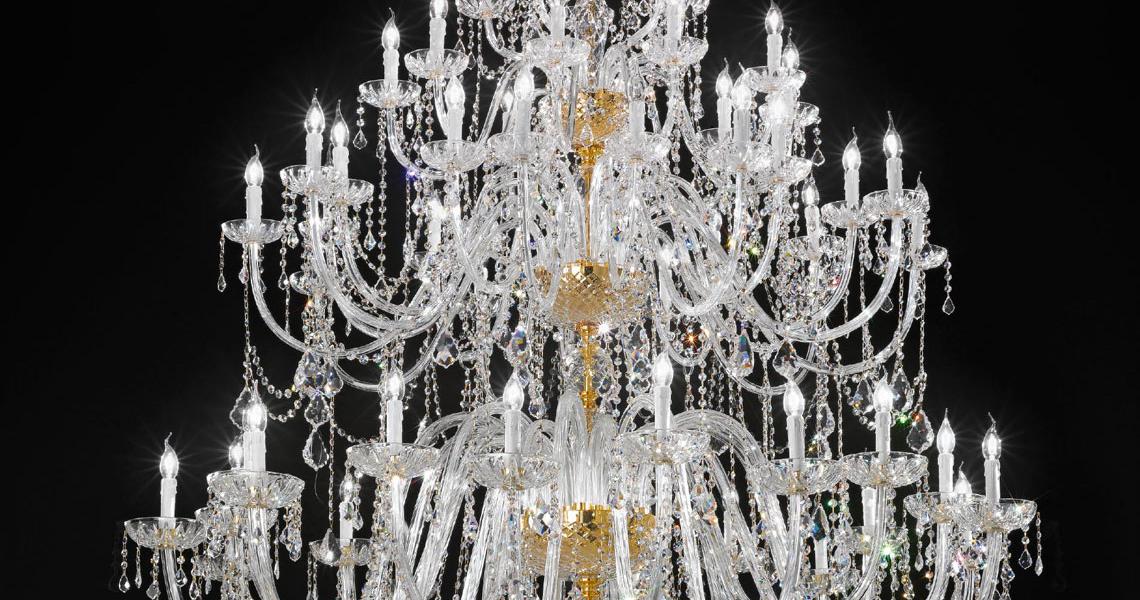Crystal Vs. Glass
In our world the material with which the lamps are made strongly affects the light effect.
The most important and basic distinction is between glass and crystal.
In the common way of speaking often these two terms are considered synonymous, or the term crystal is used to indicate the effect that we try to imitate with some glass work.
But crystal and glass are two elements distinct from each other and that in the lighting sector determine extremely different yields and light effects.
The Crystal is a type of glass, in fact it is also called lead glass, material used in processing and that determines the particular characteristics of the crystal and is distinguished from sodium calico glass, that is the common glass.
More precisely in the crystal is present the lead oxide, this element changes the density of the glass and increases its index of refraction.
The brilliance of the diamond.
The index of refraction in the crystal is higher than glass and approaches the parameters of refraction of the diamond, at an optical level this translates into a greater brilliance of the glass compared to the glass, because the light that hits its surface is strongly refracted.
The effect is greater with the increase of the percentage of lead oxide present in the glass and the current standard recognizes as glass only the glasses with a percentage equal to or greater than 24%.
In practice, when a crystal is struck by light, it reflects it more, shines more than a common glass and can give life to that play of kaleidoscopic lights typical of real crystals only.
And the Murano glass?
That is a separate episode, with a long history, that we will tell you soon ...
